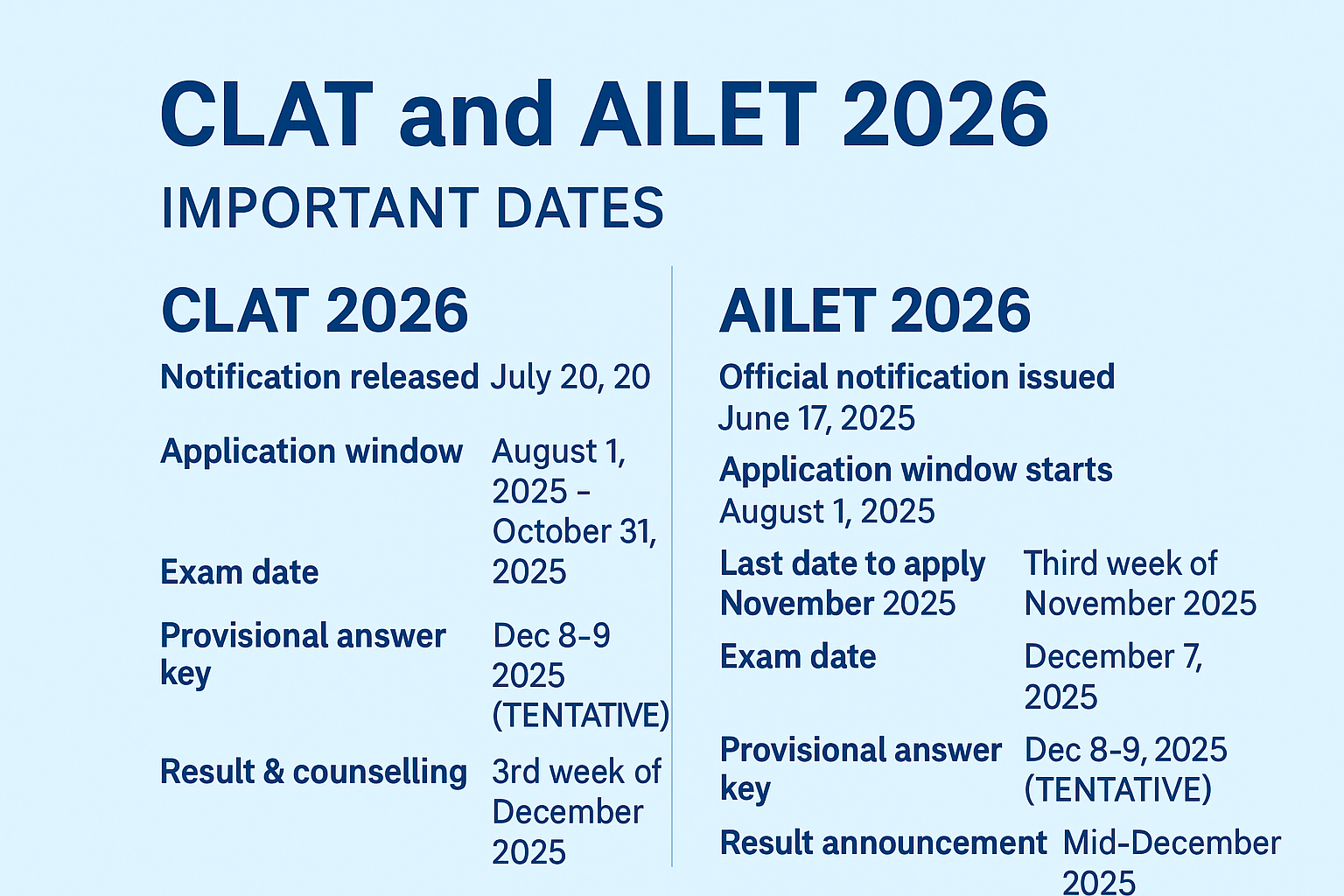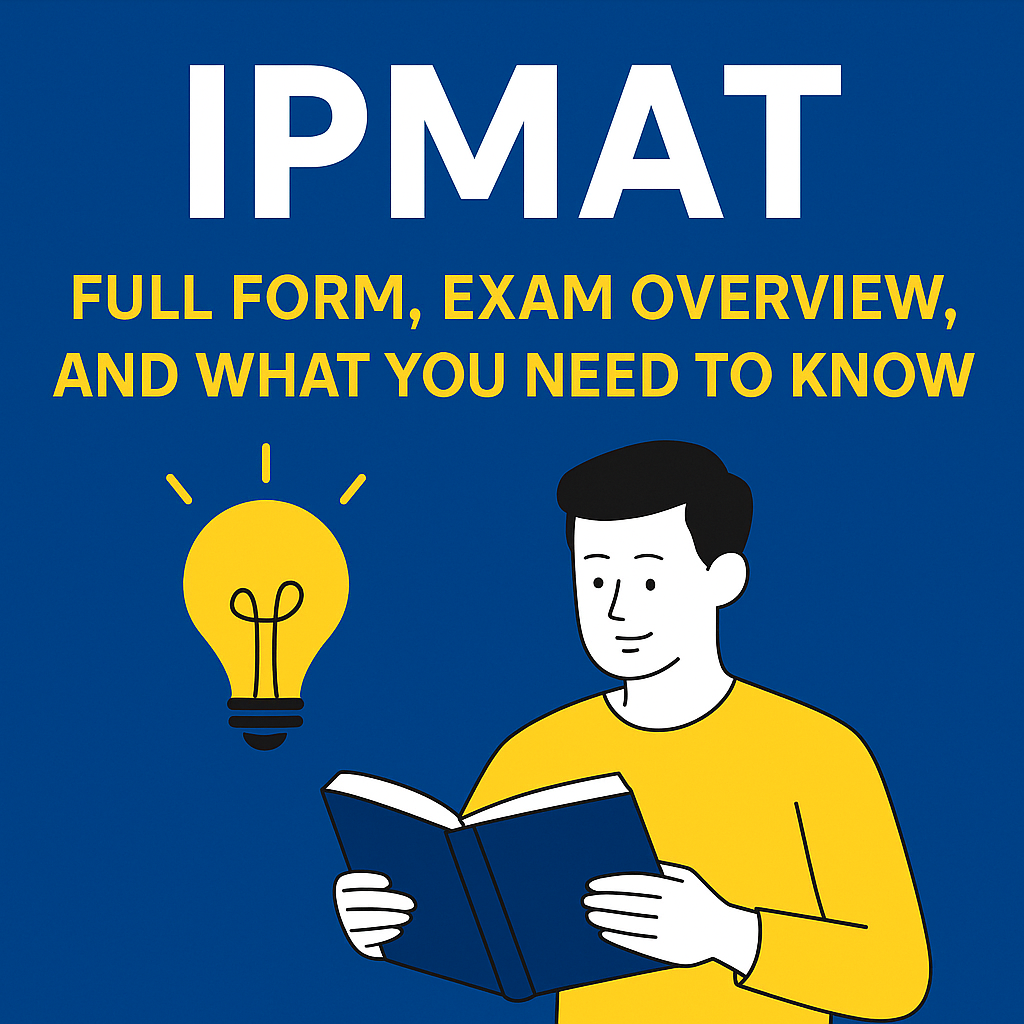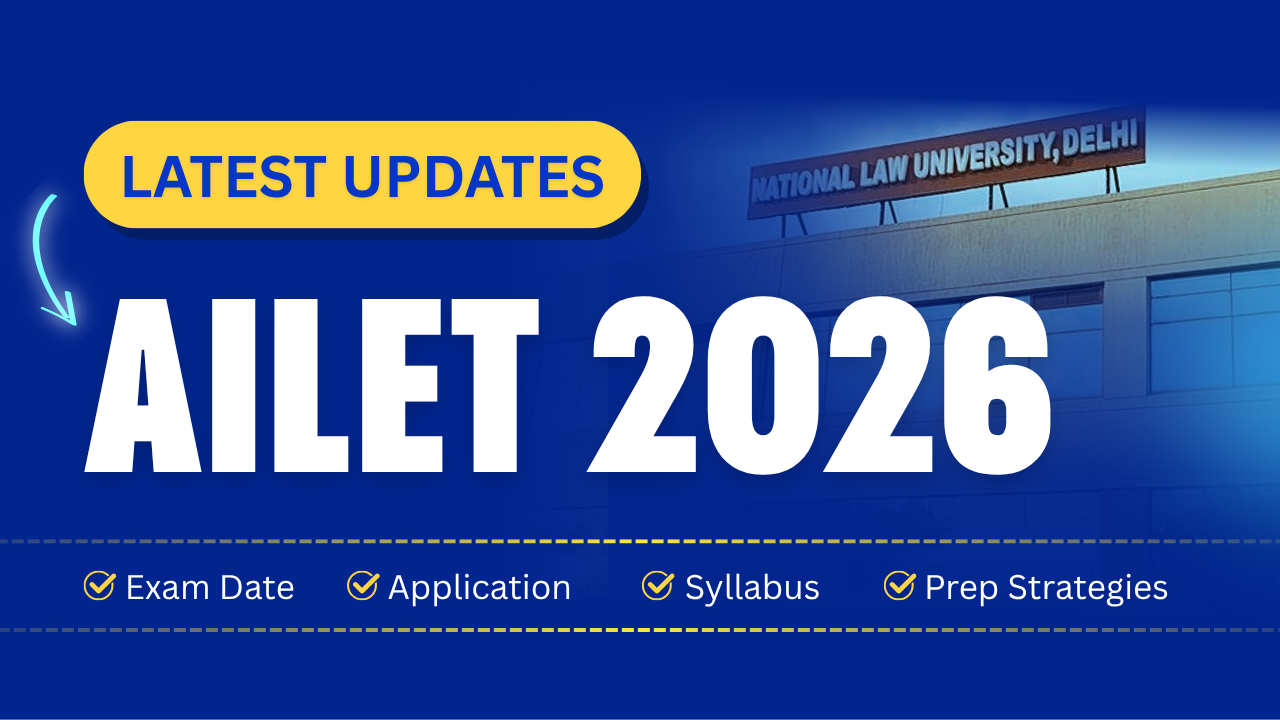By I Aug 06, 2024
Preparing for the CLAT exam requires a strong grasp of both legal and logical reasoning. These sections are crucial as they test a candidate's ability to think critically and apply legal principles. This article will explore the importance of these skills, the exam pattern, strategies for success, and resources to help you excel.
Key Takeaways
- Understanding the importance of logical and legal reasoning is essential for CLAT success.
- The CLAT exam includes sections on English, current affairs, legal reasoning, logical reasoning, and quantitative techniques.
- Effective strategies for legal reasoning include reading and analyzing case laws and applying legal principles.
- Mastering logical reasoning involves practicing various types of questions and using specific techniques to solve puzzles.
- Balancing preparation for both sections requires a well-structured study schedule and regular practice sessions.
Understanding the Importance of Logical and Legal Reasoning in CLAT
The Common Law Admission Test (CLAT) is a highly competitive exam that requires a deep understanding of both logical and legal reasoning. These sections are crucial as they account for a significant portion of the exam, making it essential for aspirants to master them.
Why Logical Reasoning Matters
Logical reasoning is vital in CLAT because it evaluates a candidate's ability to think critically and solve problems efficiently. This section tests various skills, including pattern recognition, logical sequences, and argument analysis. Mastering logical reasoning can significantly boost your overall score, as it helps in tackling complex questions with ease.
The Role of Legal Reasoning
Legal reasoning, on the other hand, assesses your understanding of legal principles and their application. This section requires you to analyze case laws, interpret statutes, and apply legal concepts to different scenarios. A strong grasp of legal reasoning is indispensable for a successful legal career, as it forms the foundation of legal practice.
Interconnection Between Logical and Legal Reasoning
The interconnection between logical and legal reasoning is evident in the way both sections complement each other. Logical reasoning enhances your ability to break down complex legal problems, while legal reasoning provides the context and framework for applying logical principles. Together, they form a comprehensive skill set that is essential for excelling in CLAT and beyond.
Understanding the importance of these sections is the first step towards effective preparation. By focusing on both logical and legal reasoning, you can develop a balanced approach that will serve you well in the exam and in your future legal career.
Exam Pattern and Structure of CLAT
The Common Law Admission Test (CLAT) is a crucial exam for aspiring law students in India. Understanding its pattern and structure is essential for effective preparation. The exam is conducted offline and lasts for 120 minutes. It comprises 120 multiple-choice questions, each carrying one mark. The test is divided into five sections: English Language, Current Affairs including General Knowledge, Legal Reasoning, Logical Reasoning, and Quantitative Techniques. Each section is designed to assess different skills necessary for a successful legal career.
Effective Strategies for Tackling Legal Reasoning Questions
Reading and Analyzing Case Laws
To excel in the legal reasoning section, start by reading the passage thoroughly. Understand the legal principle or scenario presented. Pay close attention to the details and nuances of the passage. This will help you grasp the context and apply the correct legal principles.
Applying Legal Principles
Once you understand the passage, apply the relevant legal principles to the given scenario. This requires a clear understanding of various legal concepts and their applications. Practice regularly to enhance your ability to apply these principles accurately.
Common Pitfalls to Avoid
Avoid common pitfalls such as misinterpreting the passage or overlooking key details. Stay focused and ensure you understand the question before attempting to answer. Regular practice and review can help you identify and avoid these mistakes.
Optimize your daily routine for CLAT success by incorporating logical reasoning strategies, a strategic study plan, leveraging technology, and utilizing online resources for practical understanding.
Mastering Logical Reasoning for CLAT
Logical reasoning is a crucial part of the CLAT exam, testing your ability to think critically and analytically. To excel in this section, you need to understand the different types of logical reasoning questions and practice regularly. Regular practice is key to mastering these skills.
Balancing Preparation for Logical and Legal Reasoning
Balancing preparation for both logical and legal reasoning is crucial for CLAT success. Creating a study schedule that allocates time for each subject ensures comprehensive coverage. Integrating practice sessions for both areas helps in reinforcing concepts and improving problem-solving speed. Regular review and feedback mechanisms are essential to identify weaknesses and track progress.
Resources for Enhancing Legal Reasoning Skills
To excel in the CLAT, it's crucial to develop strong legal reasoning skills. Here are some valuable resources to help you on this journey.
Resources for Improving Logical Reasoning Abilities
Improving your logical reasoning skills is crucial for excelling in the CLAT exam. This section will guide you through various resources that can help you enhance these abilities effectively.
Common Challenges in Logical and Legal Reasoning
Preparing for the CLAT exam can be daunting, especially when it comes to balancing logical and legal reasoning. These sections are crucial, yet they present unique challenges that can trip up even the most diligent students. Understanding these challenges is the first step towards overcoming them.
Success Stories: CLAT Toppers on Balancing Legal and Logical Reasoning
Interviews with CLAT Toppers
In our quest to understand the secrets behind CLAT success, we interviewed several toppers who shared their insights on balancing legal and logical reasoning. These top performers emphasized the importance of a well-rounded preparation strategy that includes both subjects. They highlighted that excelling in one area while neglecting the other can be detrimental to overall performance.
Their Preparation Strategies
The toppers we spoke to followed a structured approach to their preparation. They created detailed study schedules that allocated specific time slots for legal and logical reasoning. This ensured that neither subject was overlooked. Additionally, they integrated practice sessions into their daily routines, allowing them to apply theoretical knowledge to practical scenarios.
Lessons Learned
One of the key takeaways from these interviews is the significance of consistent practice. The toppers stressed that regular practice not only enhances understanding but also builds confidence. They also advised future aspirants to seek feedback and review their performance regularly to identify areas for improvement.
Balancing legal and logical reasoning is crucial for CLAT success. By adopting a comprehensive preparation strategy, aspirants can improve their chances of securing a top rank.
For more tips and strategies, check out our article on [10 essential tips for getting into NLSIU Bangalore via CLAT](pathname: /blogs/10-essential-tips-for-getting-into-nlsiu-bangalore-via-clat/).
Innovative Techniques for Legal and Logical Reasoning
To excel in the CLAT exam, students must adopt innovative techniques for both legal and logical reasoning. These methods not only enhance understanding but also improve problem-solving skills, which are crucial for success.
Mind Mapping
Mind mapping is a powerful tool for organizing information visually. It helps in breaking down complex legal principles and logical puzzles into simpler, manageable parts. This technique is particularly useful for retaining information and making connections between different concepts.
Critical Thinking Exercises
Engaging in critical thinking exercises sharpens analytical abilities. These exercises encourage students to question assumptions, evaluate arguments, and develop well-reasoned conclusions. Enhancing analytical abilities is a crucial aspect of both logical and legal reasoning.
Interactive Learning Methods
Interactive learning methods, such as group discussions and mock trials, provide a dynamic environment for students to apply their knowledge. These methods foster collaboration and allow students to learn from different perspectives, making the learning process more engaging and effective.
Incorporating these innovative techniques into your study routine can significantly boost your performance in the CLAT exam. By focusing on both legal and logical reasoning, you can develop a comprehensive understanding that will serve you well in your legal career.
The Future of CLAT: Trends and Changes in Exam Patterns
Anticipated Changes in CLAT
The Common Law Admission Test (CLAT) has seen numerous changes over the years, and future iterations are expected to continue this trend. One significant change anticipated is the potential merger of separate entrance exams like AILET and MEG UAT into CLAT. This would streamline the admission process for law aspirants across India.
Impact on Preparation Strategies
With the evolving exam pattern, students must adapt their preparation strategies accordingly. The introduction of more comprehensive reading comprehension passages and a greater emphasis on analytical skills means that rote learning will no longer suffice. Students need to focus on understanding concepts deeply and practicing application-based questions.
Adapting to New Trends
To stay ahead, students should keep an eye on official announcements and updates regarding the CLAT exam pattern. Regularly practicing with updated mock tests and sample papers that reflect the latest trends will be crucial. Additionally, integrating technology into study routines, such as using online platforms for practice, can provide a competitive edge.
Staying informed about the latest changes in the CLAT exam pattern is essential for effective preparation. Adaptability and continuous learning are key to success in this ever-evolving landscape.
The CLAT exam is changing, and it's important to stay updated with the latest trends. Our website offers detailed insights and resources to help you prepare effectively. Don't miss out on the opportunity to excel in your law entrance exams. Visit our website to learn more and get started on your path to success.
Conclusion
Balancing legal and logical reasoning is key to excelling in the CLAT exam. By integrating these skills into your study routine, you can enhance your understanding and application of complex concepts. Remember, consistent practice and a clear grasp of fundamental principles will give you a significant edge. As you prepare, focus on honing both your legal knowledge and logical thinking abilities. This dual approach will not only help you perform better in the exam but also lay a strong foundation for your future legal career.
Frequently Asked Questions
What is the CLAT exam?
The CLAT exam is a national-level entrance test for admission to 25 out of 27 National Law Universities (NLUs) in India. It tests skills in legal reasoning, logical reasoning, English comprehension, general knowledge, and quantitative techniques.
Who can take the CLAT exam?
Only Indian nationals and NRIs can take the CLAT exam. Foreign nationals interested in admission should contact the specific university directly. There are no age restrictions.
What is the format of the CLAT exam?
The CLAT exam is two hours long and consists of 120 multiple-choice questions. The sections include English, current affairs, legal reasoning, logical reasoning, and quantitative techniques.
How are CLAT scores used?
CLAT scores are used for admission to National Law Universities and some private law schools in India. Public sector undertakings like ONGC and the Indian Army also use CLAT PG scores for recruitment.
What are some effective strategies for preparing for the legal reasoning section?
To prepare for the legal reasoning section, focus on reading and analyzing case laws, applying legal principles, and avoiding common pitfalls. Consistent practice and understanding of legal concepts are key.
How can I improve my logical reasoning skills for CLAT?
You can improve your logical reasoning skills by practicing different types of questions, solving logical puzzles, and using practice resources and tools. Consistent practice is essential.
Are there any recommended resources for CLAT preparation?
Yes, there are several recommended resources, including books, online courses, tutorials, mock tests, and practice papers. These can help you strengthen both legal and logical reasoning skills.
What are some common challenges in the CLAT exam?
Common challenges include time pressure, the complexity of questions, and maintaining accuracy. Proper time management and regular practice can help overcome these challenges.



